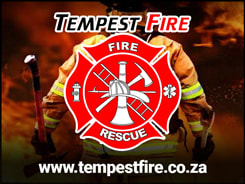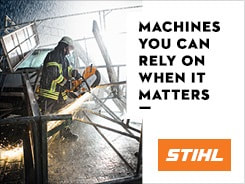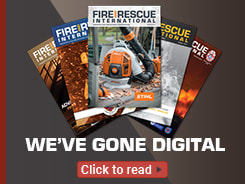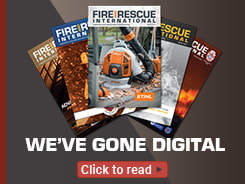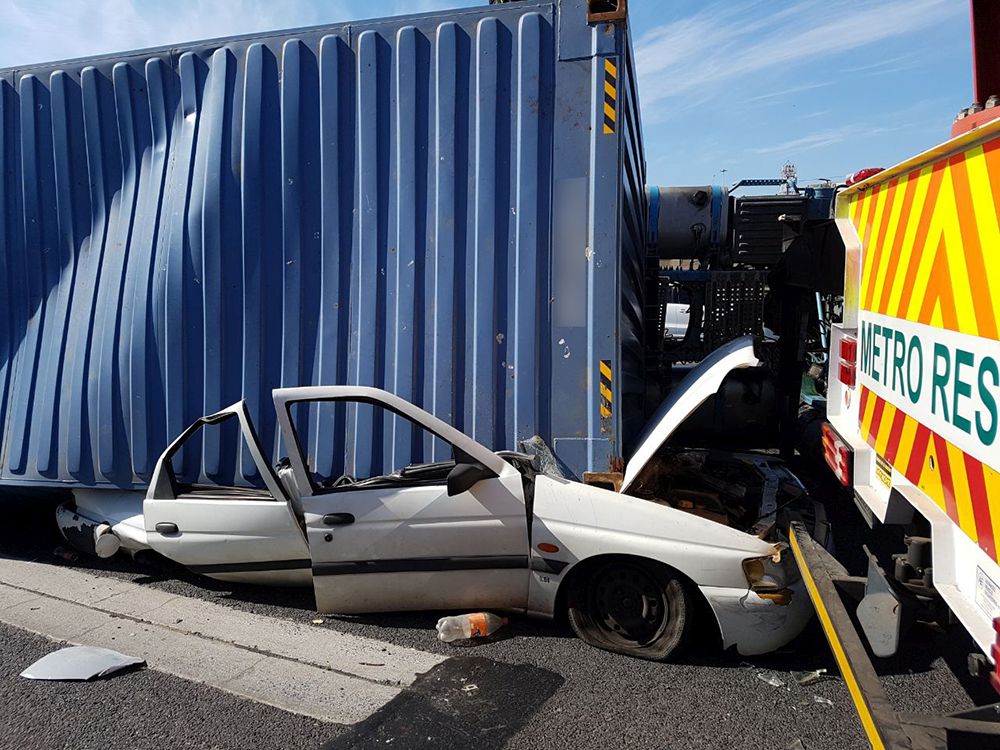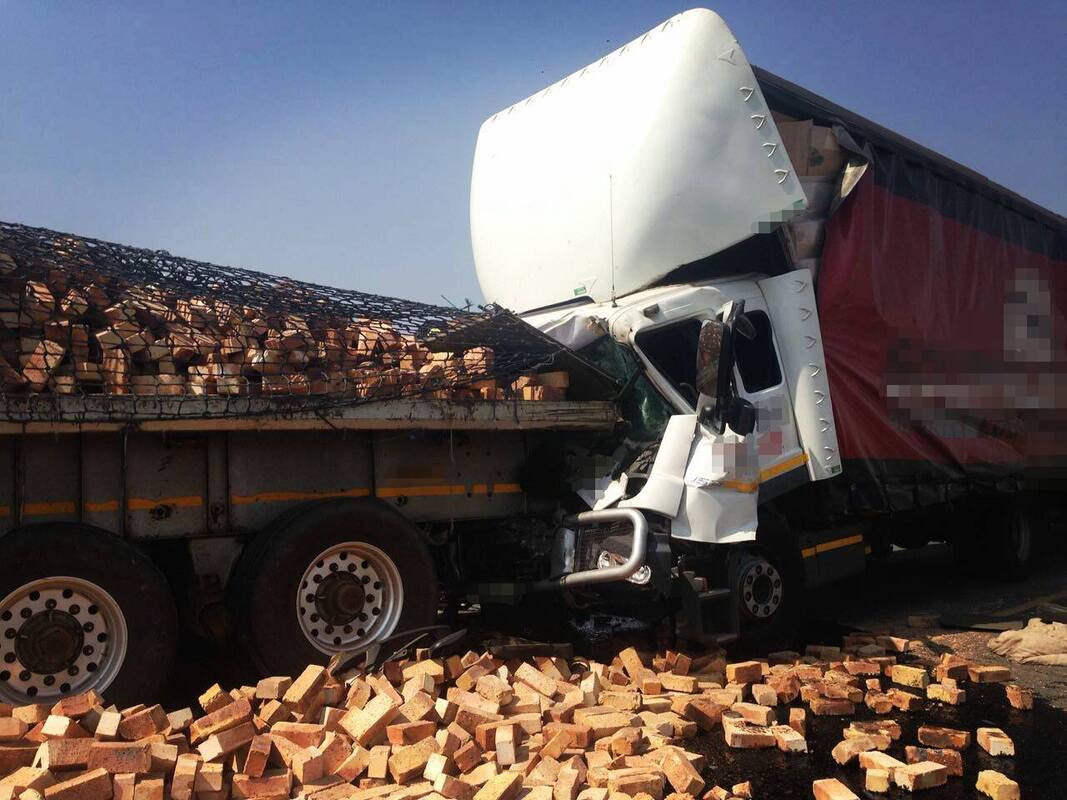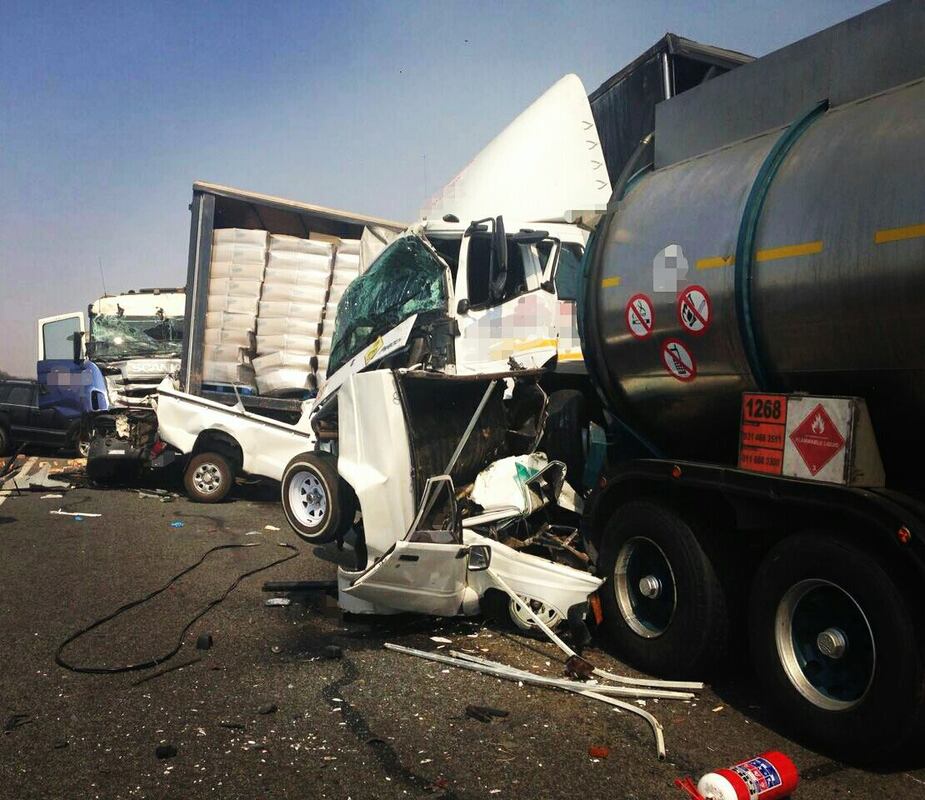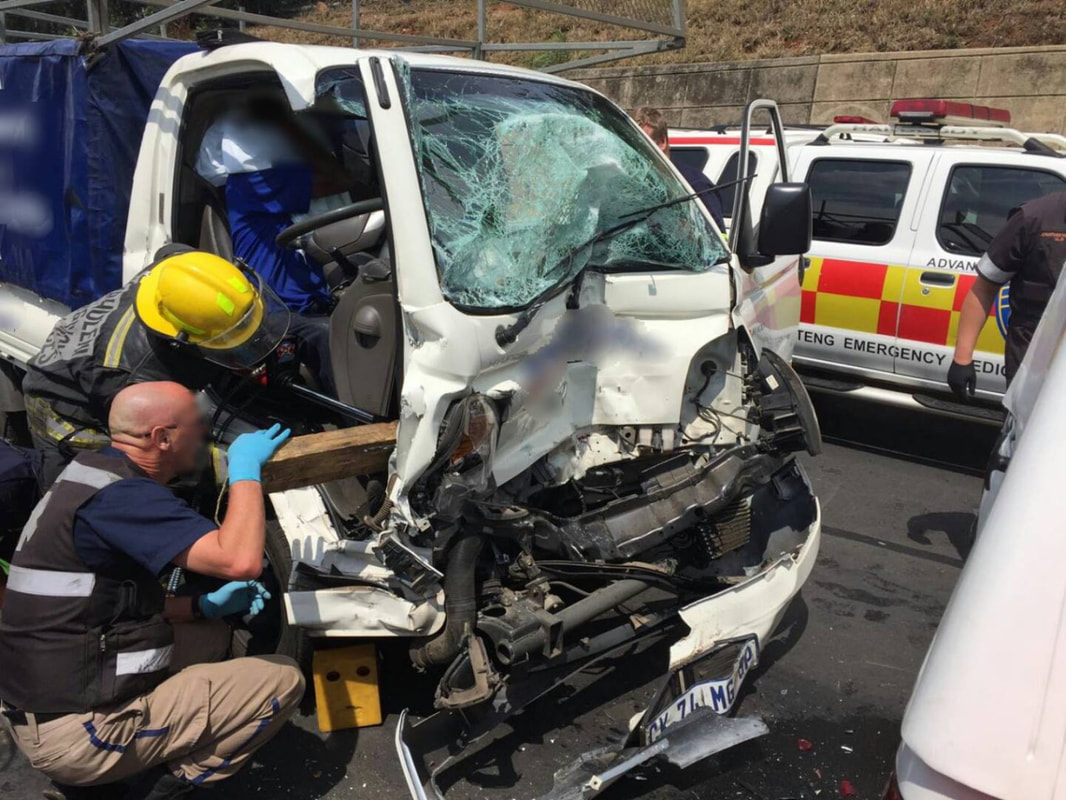- Home
- Magazines
-
Newsletters
- 19 July 2024
- 12 July 2024
- 5 July 2024
- 28 June 2024
- 14 June 2024
- 7 June 2024
- 31 May 2024
- 24 May 2024
- 17 May 2024
- 10 May 2024
- 3 May 2024
- 26 April 2024
- 19 April 2024
- 12 April 2024
- 22 March 2024
- 15 March 2024
- 8 March 2024
- 1 March 2024
- 23 February 2024
- 16 February 2024
- 9 February 2024
- 26 January 2024
- 19 January 2024
- 12 January 2024
- 22 December 2023
- 1 December 2023
- 24 November 2023
- 10 November 2023
- 3 November 2023
- 27 October 2023
- 20 October 2023
- 13 October 2023
- 6 October 2023
- 29 September 2023
- 22 September 2023
- 15 September 2023
- 8 September 2023
- 25 August 2023
- 18 August 2023
- 11 August 2023
- 4 August 2023
- 28 July 2023
- 21 July 2023
- 14 July 2023
- 7 July 2023
- 30 June 2023
- 23 June 2023
- 15 June 2023
- 2 June 2023
- 26 May 2023
- 19 May 2023
- 12 May 2023
- 5 May 2023
- 28 April 2023
- 21 April 2023
- 14 April 2023
- 6 April 2023
- 31 March 2023
- 24 March 2023
- 17 March 2023
- 10 March 2023
- 3 March 2023
- 24 February 2023
- 17 February 2023
- 10 February 2023
- 3 February 2023
- 27 January 2023
- 13 January 2023
- 22 December 2022
- 15 December 2022
- 9 December 2022
- 2 December 2022
- 25 November 2022
- 18 November 2022
- 11 November 2022
- 4 November 2022
- Advertising
- Subscribe
- Articles
-
Galleries
- AOSH Firexpo 2024
- Midvaal Fit to Fight Fire 2024
- WoF KNP 2023 Gallery
- TFA 2023 Gallery
- DMISA Conference 2023
- ETS 2023 Gallery
- Drager Fire Combat and Rescue Challenge 2023
- AOSH Firexpo 2023
- Midvaal Fit to Fight Fire
- WC IFFD 2023
- NMU 13th Fire Management Symposium 2022
- JOIFF Africa Conference 2022
- ETS 2022 Gallery
- TFA 2022 Gallery
- IFFD 2018
- SAESI
- TFA
- WRC 2018
- WRC 2019
- A-OSH/Securex
- IFE AGM 2019
- ETS Ind Fire Comp Nov 2019
- ETS Challenge 2021
- Drager launch
- Drager Fire Combat and Rescue Challenge 2022
- TFA
- Contact
- Home
- Magazines
-
Newsletters
- 19 July 2024
- 12 July 2024
- 5 July 2024
- 28 June 2024
- 14 June 2024
- 7 June 2024
- 31 May 2024
- 24 May 2024
- 17 May 2024
- 10 May 2024
- 3 May 2024
- 26 April 2024
- 19 April 2024
- 12 April 2024
- 22 March 2024
- 15 March 2024
- 8 March 2024
- 1 March 2024
- 23 February 2024
- 16 February 2024
- 9 February 2024
- 26 January 2024
- 19 January 2024
- 12 January 2024
- 22 December 2023
- 1 December 2023
- 24 November 2023
- 10 November 2023
- 3 November 2023
- 27 October 2023
- 20 October 2023
- 13 October 2023
- 6 October 2023
- 29 September 2023
- 22 September 2023
- 15 September 2023
- 8 September 2023
- 25 August 2023
- 18 August 2023
- 11 August 2023
- 4 August 2023
- 28 July 2023
- 21 July 2023
- 14 July 2023
- 7 July 2023
- 30 June 2023
- 23 June 2023
- 15 June 2023
- 2 June 2023
- 26 May 2023
- 19 May 2023
- 12 May 2023
- 5 May 2023
- 28 April 2023
- 21 April 2023
- 14 April 2023
- 6 April 2023
- 31 March 2023
- 24 March 2023
- 17 March 2023
- 10 March 2023
- 3 March 2023
- 24 February 2023
- 17 February 2023
- 10 February 2023
- 3 February 2023
- 27 January 2023
- 13 January 2023
- 22 December 2022
- 15 December 2022
- 9 December 2022
- 2 December 2022
- 25 November 2022
- 18 November 2022
- 11 November 2022
- 4 November 2022
- Advertising
- Subscribe
- Articles
-
Galleries
- AOSH Firexpo 2024
- Midvaal Fit to Fight Fire 2024
- WoF KNP 2023 Gallery
- TFA 2023 Gallery
- DMISA Conference 2023
- ETS 2023 Gallery
- Drager Fire Combat and Rescue Challenge 2023
- AOSH Firexpo 2023
- Midvaal Fit to Fight Fire
- WC IFFD 2023
- NMU 13th Fire Management Symposium 2022
- JOIFF Africa Conference 2022
- ETS 2022 Gallery
- TFA 2022 Gallery
- IFFD 2018
- SAESI
- TFA
- WRC 2018
- WRC 2019
- A-OSH/Securex
- IFE AGM 2019
- ETS Ind Fire Comp Nov 2019
- ETS Challenge 2021
- Drager launch
- Drager Fire Combat and Rescue Challenge 2022
- TFA
- Contact
|
11 August 2023
|
Featured FRI Magazine article: Heavy vehicle extrications Part 2 by Neville van Rensburg and Julius Fleischman (FRI Vol 4 No 7)
https://www.frimedia.org/uploads/1/2/2/7/122743954/rescue-roundup-vol-4-no7.pdf
https://www.frimedia.org/uploads/1/2/2/7/122743954/fri_vol_4_no_7.pdf
This week’s featured Fire and Rescue International magazine article is: Heavy vehicle extrications Part 2 by Neville van Rensburg and Julius Fleischman, World Rescue Organisation (WRO) assessors and members (FRI Vol 4 No 7). We will be sharing some technical articles from Fire and Rescue International magazine on a weekly basis with our readers to assist in technology transfer. This will hopefully create an increased awareness, providing you with hands-on advice and guidance. All our magazines are available free of charge in PDF format on our website and online at ISSUU. We also provide all technical articles as a free download in our article archive on our website.
Heavy vehicle extrications Part 2 (FRI Vol 4 No 7)
By Neville van Rensburg and Julius Fleischman, World Rescue Organisation (WRO) assessors and members
In South Africa, heavy commercial vehicles have become much bigger, more advanced and travel much faster than ever before. In order to be able to execute a good extrication, a good basic knowledge of trucks and their anatomy is essential.
Heavy commercial vehicle accidents present us with quite a different challenge and we need to stay abreast to meet this challenge. With many trucks on our roads and the increase of heavy vehicle accidents, its shows that in many of these accidents people are seriously injured or do not survive and compartment syndrome plays a vital role.
This is due to specific features of new technology as well as the size of the truck. The safety of the driver and the front seat passenger is the primary focus of cabin construction, safety for the occupants in the cabin. Manufacturers of heavy commercial vehicles are constructing the roof and pillars with different types of steel such as boron, ultra high strength steel (UUHSS) and high strength low alloy steel (HSLA).
In order to successfully cut these pillars in a rescue operation, a cutter with sufficient power and the right blade design is essential. If you want to create space or push away parts of the cabin, you need to weaken the construction first by making appropriate relief cuts.
So! Performing heavy truck extrication is no different. During this series on heavy truck extrication, we want to stress this fact: You can't take a small-vehicle approach to rescues involving heavy trucks. From staffing, staging and vehicle size to tools, tactics and construction, heavy truck extrication is considerably different than a tool job involving a car. It's also crucial to keep things as simple as possible so that the rescue fire fighter can make smart decisions and easily recall important information for these low-frequency rescue events.
With rescuer safety being our number one priority, it is critical that the cargo always be identified prior to approach and start of operations. Follow local, provincial and national rules for hazardous materials identification and mitigation. Basic rules such as approaching uphill/upwind, scanning the vehicle for placards, identifying the container type and simply asking the driver what's in the truck, are safe and effective practices.
Standard rescuer personal protective equipment includes helmet, eye protection, ear protection (as needed), steel-toe boots and work gloves flash-resistive clothing with the ability to protect the rescuer from blood-borne pathogens is recommended.
For patient safety, hard and/or soft protection should always be used to protect the patient. Hard protection could be a rigid material such as a paediatric backboard or a section of Plexiglas. This is typically placed between the patient and a rescue tool operating in close proximity to the patient. Soft protection is considered a flame-resistant extrication blanket to shield the patient from debris such as glass.
Other points to keep in mind during such a rescue operation include the following:
If you want to remove parts of the cabin, always remember the weight of those parts. The weight of a door for example is between 80 and 120kg. It may be necessary to take some precautions before you remove these parts. In case of the door, you may need to secure it with a rope over the cabin to the other side before you start to remove it. In this way you can lower the door gently and controllably from the other side, after removal.
On accidents scenes, we must be sure if there are any hazardous materials (hazmat) involved. If so, special hazmat procedures should be followed. The ‘fifth-wheel’ attaches the truck tractor with the trailer. During the collision impact, this connection may have become pressure loaded. Avoid at all cost that this connection is uncoupled. This may lead to dangerous unexpected movements of one or both units. Also make sure that the weight of the load is not affecting your rescue plan; maybe the stability of the load needs extra attention.
Before you start a rescue operation, always check the stability of the combination ‘truck and load’. If it is necessary to stabilise, this may require special equipment. Normal stability equipment, which is used in light goods vehicles (LGV) incidents, may not be suitable for these types of incidents due to the fact that they may not be strong enough. Low pressure lifting bags can provide some stability but the use of (hydraulic) shoring equipment with enough power and strength will provide the safest stability. The landing gear can also been used to lower them to help with stabilisation of the truck’s load.
Most trucks carry an amount of fuel with them. Tanks with up to 800 litres are not uncommon. Some trucks even have more than one tank connected with each other. Besides the possible risks when the cabin is on fire, one also needs to consider the environmental implications of leakage.
The current voltage in trucks is mostly 24 volt, created by two connected batteries. These batteries can be found in a variety of locations around the truck, eg at the left and right side of the chassis. To disconnect the power supply it is not always necessary to reach these batteries. Modern trucks are provided with an emergency switch. You will find it on the driver side, near the batteries location. In the early days, trucks were provided with leaf springs in all kinds of types and strengths that did not really affect the rescue operation.
Having a basic knowledge of heavy-truck types and their associated hazards is essential for rescuer safety and operational success.
We are all out here to work together for the same cause and conclusion, to safely save lives. As always, be safe out there and train to your best.
Sources: Fire Engineering, Fire link
https://www.frimedia.org/uploads/1/2/2/7/122743954/fri_vol_4_no_7.pdf
This week’s featured Fire and Rescue International magazine article is: Heavy vehicle extrications Part 2 by Neville van Rensburg and Julius Fleischman, World Rescue Organisation (WRO) assessors and members (FRI Vol 4 No 7). We will be sharing some technical articles from Fire and Rescue International magazine on a weekly basis with our readers to assist in technology transfer. This will hopefully create an increased awareness, providing you with hands-on advice and guidance. All our magazines are available free of charge in PDF format on our website and online at ISSUU. We also provide all technical articles as a free download in our article archive on our website.
Heavy vehicle extrications Part 2 (FRI Vol 4 No 7)
By Neville van Rensburg and Julius Fleischman, World Rescue Organisation (WRO) assessors and members
In South Africa, heavy commercial vehicles have become much bigger, more advanced and travel much faster than ever before. In order to be able to execute a good extrication, a good basic knowledge of trucks and their anatomy is essential.
Heavy commercial vehicle accidents present us with quite a different challenge and we need to stay abreast to meet this challenge. With many trucks on our roads and the increase of heavy vehicle accidents, its shows that in many of these accidents people are seriously injured or do not survive and compartment syndrome plays a vital role.
This is due to specific features of new technology as well as the size of the truck. The safety of the driver and the front seat passenger is the primary focus of cabin construction, safety for the occupants in the cabin. Manufacturers of heavy commercial vehicles are constructing the roof and pillars with different types of steel such as boron, ultra high strength steel (UUHSS) and high strength low alloy steel (HSLA).
In order to successfully cut these pillars in a rescue operation, a cutter with sufficient power and the right blade design is essential. If you want to create space or push away parts of the cabin, you need to weaken the construction first by making appropriate relief cuts.
So! Performing heavy truck extrication is no different. During this series on heavy truck extrication, we want to stress this fact: You can't take a small-vehicle approach to rescues involving heavy trucks. From staffing, staging and vehicle size to tools, tactics and construction, heavy truck extrication is considerably different than a tool job involving a car. It's also crucial to keep things as simple as possible so that the rescue fire fighter can make smart decisions and easily recall important information for these low-frequency rescue events.
With rescuer safety being our number one priority, it is critical that the cargo always be identified prior to approach and start of operations. Follow local, provincial and national rules for hazardous materials identification and mitigation. Basic rules such as approaching uphill/upwind, scanning the vehicle for placards, identifying the container type and simply asking the driver what's in the truck, are safe and effective practices.
Standard rescuer personal protective equipment includes helmet, eye protection, ear protection (as needed), steel-toe boots and work gloves flash-resistive clothing with the ability to protect the rescuer from blood-borne pathogens is recommended.
For patient safety, hard and/or soft protection should always be used to protect the patient. Hard protection could be a rigid material such as a paediatric backboard or a section of Plexiglas. This is typically placed between the patient and a rescue tool operating in close proximity to the patient. Soft protection is considered a flame-resistant extrication blanket to shield the patient from debris such as glass.
Other points to keep in mind during such a rescue operation include the following:
- The driver seat is mostly adjustable in a variety of ways but always remember that sometimes it can lower itself if the power is switched off. Make use of this knowledge if you want to create space, but also be aware of the possible risks.
- Electrical current; in many cabins you will find high voltage appliances (220 V).
- Independent suspension of the cabin; stabilise this before entry. Make sure the connection (hinges) between the cabin and chassis are not broken before you block the suspension of the cabin.
- Sleeper compartment (if existing); check if there was somebody sleeping when the accident occurred.
- The cabin size and height may require you use a working platform.
If you want to remove parts of the cabin, always remember the weight of those parts. The weight of a door for example is between 80 and 120kg. It may be necessary to take some precautions before you remove these parts. In case of the door, you may need to secure it with a rope over the cabin to the other side before you start to remove it. In this way you can lower the door gently and controllably from the other side, after removal.
On accidents scenes, we must be sure if there are any hazardous materials (hazmat) involved. If so, special hazmat procedures should be followed. The ‘fifth-wheel’ attaches the truck tractor with the trailer. During the collision impact, this connection may have become pressure loaded. Avoid at all cost that this connection is uncoupled. This may lead to dangerous unexpected movements of one or both units. Also make sure that the weight of the load is not affecting your rescue plan; maybe the stability of the load needs extra attention.
Before you start a rescue operation, always check the stability of the combination ‘truck and load’. If it is necessary to stabilise, this may require special equipment. Normal stability equipment, which is used in light goods vehicles (LGV) incidents, may not be suitable for these types of incidents due to the fact that they may not be strong enough. Low pressure lifting bags can provide some stability but the use of (hydraulic) shoring equipment with enough power and strength will provide the safest stability. The landing gear can also been used to lower them to help with stabilisation of the truck’s load.
Most trucks carry an amount of fuel with them. Tanks with up to 800 litres are not uncommon. Some trucks even have more than one tank connected with each other. Besides the possible risks when the cabin is on fire, one also needs to consider the environmental implications of leakage.
The current voltage in trucks is mostly 24 volt, created by two connected batteries. These batteries can be found in a variety of locations around the truck, eg at the left and right side of the chassis. To disconnect the power supply it is not always necessary to reach these batteries. Modern trucks are provided with an emergency switch. You will find it on the driver side, near the batteries location. In the early days, trucks were provided with leaf springs in all kinds of types and strengths that did not really affect the rescue operation.
Having a basic knowledge of heavy-truck types and their associated hazards is essential for rescuer safety and operational success.
We are all out here to work together for the same cause and conclusion, to safely save lives. As always, be safe out there and train to your best.
Sources: Fire Engineering, Fire link
Quick navigation
Social
|
Who are we?FRI Media (Pty) Ltd is an independent publisher of technical magazines including the well-read and respected Fire and Rescue International, its weekly FRI Newsletter and the Disaster Management Journal. We also offer a complete marketing and publishing package, which include design, printing and corporate wear and gifts. |
Weekly FRI Newsletter |
© Copyright 2018 Fire and Rescue International. All Rights Reserved.

